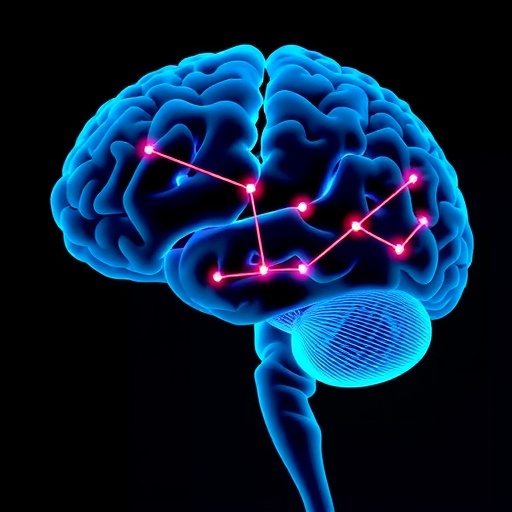In the quest to develop effective treatments for traumatic brain injury (TBI), hypothermia has emerged as a powerful neuroprotective strategy due to its ability to preserve neuron health and limit secondary injury mechanisms. Traditionally, therapeutic hypothermia involves externally cooling the body or brain to reduce metabolic demand, inhibit neuroinflammation, and protect neurons from delayed degeneration. However, despite promising preclinical and clinical findings, the use of external cooling methods is often complicated by systemic side effects such as shivering, cardiac arrhythmias, and coagulopathies. These challenges have spurred researchers to seek alternative approaches that can replicate the benefits of hypothermia without the burdens of external cooling.
A groundbreaking study led by Takeshi Sakurai and colleagues at the University of Tsukuba, recently published in the Journal of Neuroscience, unveils a novel mechanism for inducing a hypothermic state from within the brain itself. Their work leverages the activation of a specific neuronal population—the so-called Q neurons—which when stimulated, induce a reversible hibernation-like hypothermic state in mice without the need for external temperature manipulation. This innovative approach circumvents many complications associated with current hypothermia therapies, potentially opening new avenues for neuroprotective treatment after brain injury.
The researchers embarked on a series of well-controlled experiments to test whether Q neuron-induced hypothermia could indeed confer neuroprotection following traumatic brain injury. Employing advanced imaging techniques and behavioral assays, they observed significant improvements in motor function recovery in mice that underwent Q neuron activation in the aftermath of brain injury. This finding is particularly important as motor deficits are a common and debilitating consequence of TBI. The ability to restore motor functions reflects meaningful preservation of neural circuits and suggests enhanced neuronal survival.
At the cellular level, the study also revealed that the Q neuron-driven hypothermic state correlates with marked reductions in neuroinflammation—an inflammatory response that often exacerbates brain damage post-injury. Microglial activation and astrocyte proliferation, key hallmarks of neuroinflammatory processes, were significantly diminished in mice experiencing this induced hypothermia. The attenuation of neuroinflammation likely contributes to the improved neuronal survival and functional outcomes. By tempering the brain’s immune response, Q neuron activation appears to create a more favorable environment that fosters recovery and limits secondary neural damage.
Delving further into the cellular mechanisms, the researchers identified various biomarkers consistent with preserved neural health. These included maintenance of neuronal integrity markers and reduced activation of apoptotic pathways, suggesting that Q neuron-induced hypothermia stalls cell death cascades activated by injury. This insight is crucial because preventing neuronal apoptosis can profoundly influence long-term outcomes after TBI, potentially reducing chronic deficits and improving quality of life.
One of the groundbreaking implications of this study lies in its strategy to induce hypothermia endogenously. Traditional hypothermia therapy often involves cumbersome cooling devices and intensive monitoring, limiting their widespread clinical applicability. By contrast, harnessing specific neuronal circuits to initiate a reversible hypothermic state represents a paradigm shift in neurotherapeutics. This method could, in principle, allow for more precise control over timing and duration of hypothermia, minimizing systemic risks while maximizing neuroprotective benefits.
The study’s design also emphasizes the translational potential of this approach. While the experiments were conducted on male mice, the authors propose a roadmap for advancing this work into larger animal models and eventually clinical trials. Key next steps include optimizing the timing of Q neuron activation relative to the injury event and fine-tuning the duration of induced hypothermia to balance efficacy with safety. Moreover, evaluating this approach across various models of brain injury will be essential to establish its broader therapeutic relevance.
Researchers also speculate that this brain-centric hypothermia approach might synergize with other neuroprotective strategies. Combining Q neuron activation with pharmacological agents targeting oxidative stress or excitotoxicity could amplify neuroprotection. Such combinatorial therapies may be critical in tackling the complex pathophysiology of TBI, which involves a cascade of cellular and molecular events that contribute to injury progression.
The implications of Q neuron-induced hypothermia extend beyond traumatic brain injury, potentially impacting other neurological disorders characterized by neuroinflammation and neuronal damage. Conditions such as stroke, neurodegenerative diseases, and even epilepsy might benefit from precise modulation of temperature and metabolic states via endogenous neuronal circuits. This versatility underscores the broad scientific and clinical significance of the findings.
Critically, the reversibility of the hypothermic state induced by Q neurons is a major advantage. Unlike prolonged systemic hypothermia, which can lead to adverse effects if maintained too long, a neuronal control mechanism allows the brain temperature to return to normal promptly once the neuroprotective window closes. This controlled cycling between hypothermic and normothermic states could offer safer, more adaptable therapeutic interventions tailored to individual patient needs.
Ultimately, this innovative research reflects a significant leap forward in neuroscience and therapeutic development—a junction where intricate neural circuitry and clinical neurology converge to offer hope for patients suffering from traumatic brain injuries. It exemplifies how fundamental understanding of neural populations and their functionalities can be harnessed to design smarter, less invasive treatments with potentially transformative outcomes.
As Takeshi Sakurai remarks, the future directions of this research will be pivotal: “Optimizing the timing and duration of this treatment after injury, testing across additional injury models, and evaluating safety and efficacy in larger animals will be important next steps.” These efforts represent crucial milestones toward eventual human applications, potentially redefining how we approach brain injury treatments and moving closer to effective neuroprotective care that leverages the brain’s own regulatory mechanisms.
This study not only provides compelling preclinical evidence for a novel hypothermia paradigm but also inspires a broader reevaluation of how endogenous physiological states can be manipulated for therapeutic gain. The integration of cutting-edge neuroscience techniques, sophisticated imaging modalities, and precise behavioral assessments exemplifies the forefront of translational research needed to bridge the gap from bench to bedside in neurological care.
The promising results invite the scientific community and clinical practitioners alike to reimagine hypothermia therapy—a modality once limited by harsh side effects—through the lens of neural circuit modulation. Should further research corroborate these findings in humans, the impact could be profound, offering a safer, more effective means to protect the brain in the vulnerable aftermath of injury and change the trajectory of recovery for countless patients worldwide.
Subject of Research: Traumatic brain injury, neuroprotection, hypothermia, neural circuitry
Article Title: Q Neuron-Induced Hypothermia Promotes Functional Recovery and Suppresses Neuroinflammation After Brain Injury
News Publication Date: 13-Oct-2025
Web References: 10.1523/JNEUROSCI.1035-25.2025
References: Not provided
Image Credits: Not provided
Keywords: Brain injuries, Brain damage, Traumatic injury, Medical treatments, Neuroprotection
Tags: external cooling complicationshibernation-like hypothermiainnovative medical therapiesinternal brain cooling mechanismsJournal of Neuroscience researchneuronal health preservationneuroprotective strategiespreclinical findings in hypothermiaQ neurons activationsecondary injury limitationtherapeutic hypothermiatraumatic brain injury treatment





